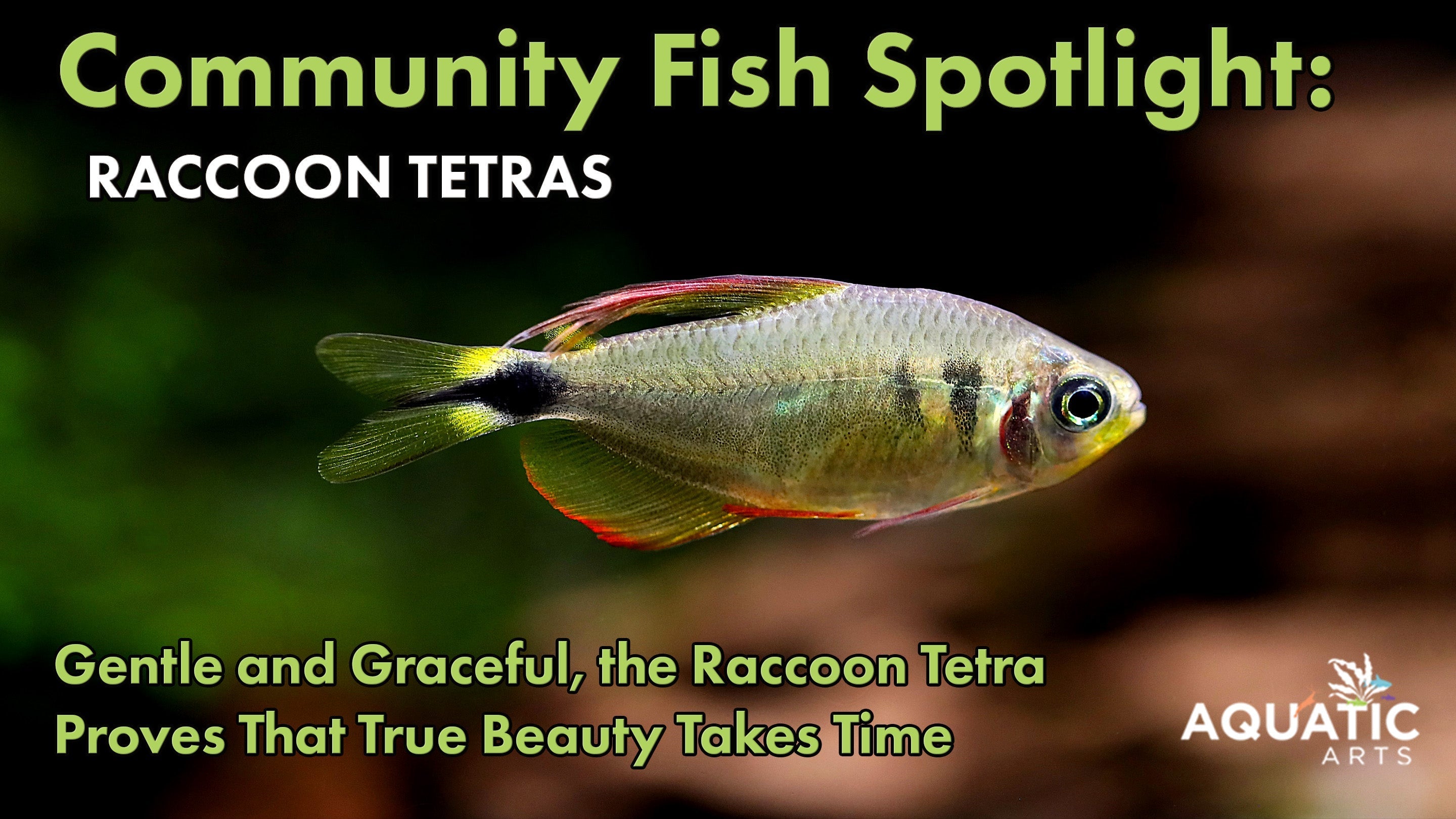Invert Obsession: Thunderbolt Crayfish (Cherax pulcher)

In the world of aquarium enthusiasts, few creatures command attention quite like the Thunderbolt Crayfish (Cherax pulcher). With its captivating appearance and engaging behavior, this freshwater crustacean has become a favorite among hobbyists seeking to add a touch of excitement to their aquatic setups.
Aesthetic Marvel:
One cannot help but be drawn to the Thunderbolt Crayfish's mesmerizing appearance. Characterized by vibrant hues of electric blue, contrasted with bold patterns resembling thunderbolts streaking across its carapace, this crayfish is truly a sight to behold. Its dynamic colors shimmer and shift with movement, creating an enchanting display that captivates both novice and experienced aquarists alike.

Color Variation: While Thunderbolt Crayfish are known for their vibrant blue coloration and thunderbolt-like patterns, there can be variation in coloration among individuals. Some may exhibit deeper shades of blue, while others may have more subdued hues or variations in patterning.

Natural Habitat: Thunderbolt Crayfish, scientifically known as Cherax pulcher, are native to freshwater streams and rivers in Papua New Guinea. They inhabit rocky or sandy substrates in these aquatic environments, where they burrow into the sediment for shelter and protection.
Playful Personality:
Beyond its stunning aesthetics, the Thunderbolt Crayfish boasts a fascinating personality. Known for its inquisitive nature and playful demeanor, this crustacean brings life and vibrancy to any aquarium environment. From scavenging for food to rearranging décor, the Thunderbolt Crayfish engages in energetic antics that never fail to entertain its human admirers.

Social Structure: While Thunderbolt Crayfish are generally solitary creatures, they may exhibit social behaviors in certain situations. In captivity, they may form loose hierarchies within a group, with dominant individuals asserting themselves over subordinates through displays of aggression or dominance.
Aquatic Care:
Aquascaping a tank for Thunderbolt Crayfish requires careful consideration of their natural habitat and behavior to create a suitable and visually appealing environment. Here are some key points to keep in mind when aquascaping for Thunderbolt Crayfish:
-
Substrate: Choose a substrate of sand or fine gravel to mimic the crayfish's natural habitat. Thunderbolt Crayfish are burrowers, so a soft substrate will allow them to dig and explore comfortably.
-
Hardscape: Incorporate natural rocks and driftwood to provide hiding places and climbing surfaces for the crayfish. Arrange the hardscape to create caves, crevices, and overhangs where the crayfish can retreat and feel secure.
-
Plants: Select hardy aquatic plants that can tolerate the crayfish's activity and won't be easily uprooted. Anubias, Java fern, and Vallisneria are excellent choices as they are robust and can withstand the crayfish's digging behavior.
-
Layout: Create a layout that includes open swimming areas as well as sheltered spaces for the crayfish to explore. Avoid overcrowding the tank with too many decorations, as this can limit the crayfish's mobility and lead to territorial disputes.
-
Maintenance: Regularly trim and prune plants to prevent them from overgrowing and blocking the crayfish's access to the tank. Perform routine water changes and monitor water parameters to ensure optimal conditions for both the crayfish and the aquatic plants.
-
Safety: Be mindful of any sharp edges or potential hazards in the aquascape that could injure the crayfish. Smooth out rough surfaces and securely anchor decorations to prevent them from toppling over and causing harm.
By following these guidelines and creating a well-balanced and naturalistic aquascape, you can provide a stimulating and enriching environment for your Thunderbolt Crayfish while also enhancing the overall beauty of your aquarium.
Feeding / Diet:
When it comes to feeding Thunderbolt Crayfish, providing a varied and balanced diet is essential to ensure their health and vitality. These omnivorous crustaceans will eagerly consume a variety of foods, including plant matter, algae, and protein-rich sources.
A staple diet for Thunderbolt Crayfish can consist of sinking pellets or granules specifically formulated for crayfish or crustaceans. These commercially available foods provide essential nutrients and vitamins to support their overall health and immune system.
In addition to prepared foods, Thunderbolt Crayfish will benefit from the inclusion of fresh vegetables in their diet. Leafy greens such as spinach, kale, and lettuce are excellent options and can be offered either raw or blanched. Other suitable vegetables include zucchini, cucumber, and carrots, which should be thinly sliced or grated to make them easier for the crayfish to consume.
Protein-rich treats can also be offered to Thunderbolt Crayfish occasionally to supplement their diet and provide additional variety. Freeze-dried or frozen foods such as bloodworms, brine shrimp, and daphnia are popular choices and can be offered as an occasional treat.
It's essential to monitor the amount of food offered to Thunderbolt Crayfish to prevent overfeeding, which can lead to water quality issues and obesity. A general guideline is to provide only as much food as the crayfish can consume within a few hours, removing any uneaten portions to prevent them from fouling the water.
By offering a balanced diet that includes a variety of foods, aquarists can ensure that their Thunderbolt Crayfish receive the nutrition they need to thrive and remain healthy in the aquarium environment.
Tank Mates / Compatibility:
When considering tank mates for Thunderbolt Crayfish, it's essential to choose species that can coexist peacefully and won't pose a threat to each other. While Thunderbolt Crayfish are generally peaceful, they may exhibit territorial behavior, especially towards other crayfish or similarly sized crustaceans. Therefore, it's advisable to avoid housing them with other crayfish species to prevent potential aggression or conflicts.
Instead, compatible tank mates for Thunderbolt Crayfish include peaceful fish species that can tolerate their presence and won't harass or be harassed by them. Some suitable options may include small to medium-sized community fish such as tetras, rasboras, gouramis, and certain types of catfish. Additionally, bottom-dwelling species like dwarf shrimp and snails can also make suitable tank mates, as long as they are large enough to avoid being seen as prey by the crayfish.
It's crucial to research the specific requirements and temperament of potential tank mates before introducing them to the aquarium. Additionally, closely monitoring their interactions and ensuring that all inhabitants have adequate space and hiding spots can help prevent conflicts and promote a harmonious aquatic environment for all inhabitants.
Breeding Potential:
Breeding Thunderbolt Crayfish presents an exciting opportunity for enthusiasts looking to expand their aquarium population. Female crayfish will carry their eggs beneath their tails until they hatch, typically after a gestation period of several weeks. Once the eggs hatch, the tiny offspring, known as juveniles or fry, will cling to their mother for protection. This behavior is essential for the survival of the offspring during their early stages of development.
With proper care and attention, breeding Thunderbolt Crayfish can be a rewarding and educational experience for aquarium enthusiasts. Creating the ideal breeding environment, which includes providing ample hiding places and suitable water conditions, can encourage successful breeding behavior. Aquarists should also ensure that the adult crayfish are well-fed and healthy to optimize breeding success.
Observing the breeding process and witnessing the growth and development of the juvenile crayfish can provide valuable insights into the fascinating world of aquatic life. Additionally, successfully breeding Thunderbolt Crayfish can contribute to the conservation efforts of this species and provide an opportunity to share the experience with fellow hobbyists.
Overall, breeding Thunderbolt Crayfish is not only a rewarding endeavor but also an educational one that allows enthusiasts to deepen their understanding of these captivating creatures and contribute to their conservation.

Breeding Behavior: During the breeding season, male Thunderbolt Crayfish will engage in courtship displays to attract females. These displays often involve the male using its claws to signal to the female and demonstrate his fitness as a potential mate.
Conclusion:
In conclusion, Thunderbolt Crayfish (Cherax pulcher) offer a captivating addition to any freshwater aquarium. Their striking colors, intriguing behaviors, and manageable care needs make them an ideal choice for aquarists, whether novice or seasoned. If you're eager to delve deeper into the world of Thunderbolt Crayfish (Cherax pulcher) or wish to enrich your aquatic setup, don't hesitate to explore the comprehensive product listing available on AquaticArts.com. Discover their availability and potential to infuse vibrancy into your tank, bringing joy and fascination to enthusiasts of all levels.
Q&A Section
Q: What size aquarium do I need to keep Thunderbolt Crayfish (Cherax pulcher)?
A: Thunderbolt Crayfish (Cherax pulcher) require a spacious aquarium to thrive. A minimum tank size of 20 gallons is recommended for a single crayfish, with larger tanks preferred for multiple individuals or community setups. Providing ample space allows them to exhibit natural behaviors like burrowing and exploring their environment.
Q: How long do Thunderbolt Crayfish (Cherax pulcher) live in captivity?
A: In captivity, Thunderbolt Crayfish (Cherax pulcher) can live for several years with proper care. On average, they may live anywhere from 2 to 5 years, although some individuals have been known to live longer under optimal conditions.
Q: What are common diseases I should look out for with Thunderbolt Crayfish (Cherax pulcher)?
A: While Thunderbolt Crayfish are generally hardy creatures, they can be susceptible to certain diseases if their environmental conditions are not well-maintained. Common diseases to watch out for include bacterial infections, fungal infections, and parasites. Symptoms may include lethargy, loss of appetite, abnormal behavior, or visible signs of illness such as discoloration or lesions.
Q: How important is calcium for keeping Thunderbolt Crayfish (Cherax pulcher)?
A: Calcium is essential for the health and well-being of Thunderbolt Crayfish, particularly during molting. Adequate calcium levels in the water help ensure that crayfish can form a strong and properly mineralized exoskeleton after molting. Providing sources of calcium, such as calcium-rich foods or supplements, can help support healthy molting and overall growth in crayfish.
Q: How to sex Thunderbolt Crayfish (Cherax pulcher)?
A: Sexing Thunderbolt Crayfish (Cherax pulcher) can be challenging, especially in juveniles. However, adult males typically have larger and more robust claws compared to females. Additionally, males may have a slightly narrower abdomen compared to females, especially during the breeding season when females may appear swollen with eggs. Another method for sexing crayfish involves examining the genital openings located underneath the abdomen, with males having a more pointed and elongated structure compared to the broader and more rounded opening in females.




